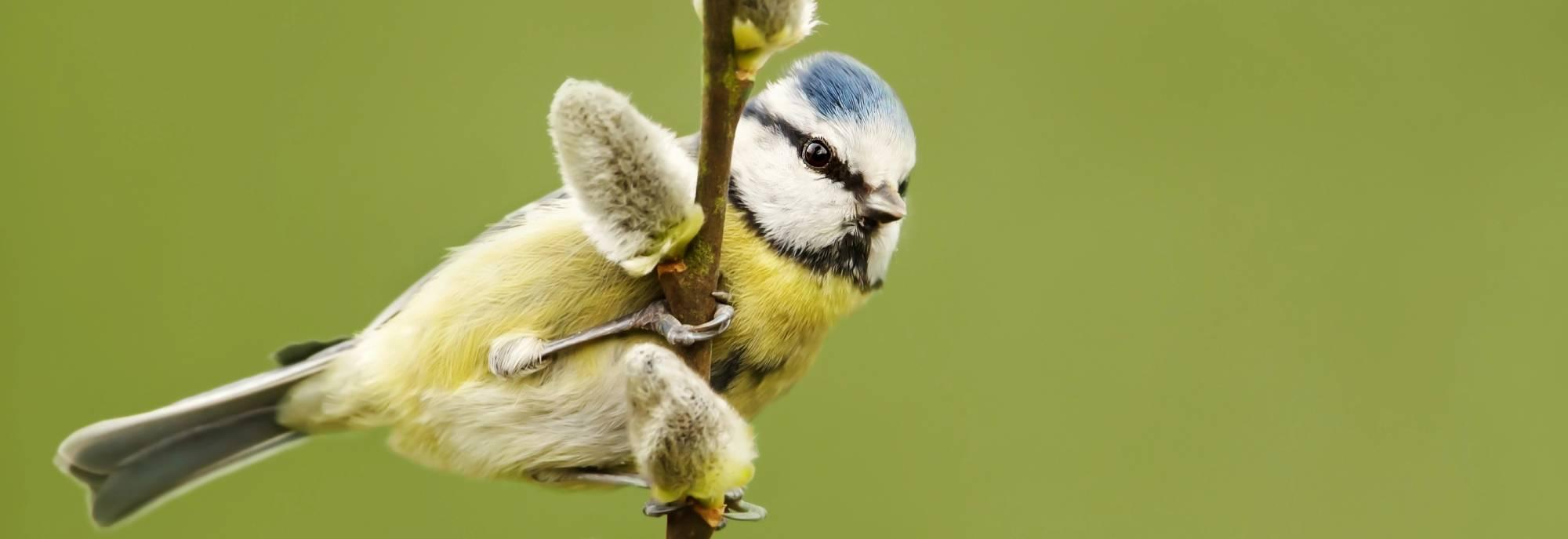Seasonal Guide to Garden BirdsUpdated 17 hours ago

Whether it’s the joyful chirps of spring or the quiet solitude of winter, each season brings its unique birds to our gardens. Understanding the seasonal changes in bird behaviour and diet can enhance your birdwatching experience and help you provide the best care for your feathered visitors throughout the year. Let’s look at what you can expect each season in your UK garden.
Spring: The Season of Renewal
- Birds to Watch: Look out for the arrival of migratory species like swallows and warblers. Migratory species like chiffchaffs and willow warblers return. Also, watch for vibrant goldfinches and the drumming of great spotted woodpeckers as they establish territories.
- Behaviour: This is a busy time for birds as they establish territories, find mates, and begin nesting. Courtship displays are common—look for sky dances from larks and aerial feats from swallows.
- Garden Tips: Provide nesting boxes and materials like moss and twigs to help with nest building. Keep your feeders full; birds need plenty of energy for breeding and nesting. Clean out birdhouses early in the season to welcome nesters. Consider planting early-blooming flowers to attract insects for birds to feed on. Providing a mud source can also help swallows and house martins build their nests.
Summer: Full of Life
- Birds to Watch: Young birds begin to explore, and gardens are alive with fledglings. Gardens are bustling with fledglings—robins, bluetits, and blackbirds are busy feeding their young.
- Behaviour: Feeding young and teaching them survival skills dominate bird activities. Parent birds are often seen darting back and forth with food for their noisy chicks. Juveniles can be spotted learning to fly and feed.
- Garden Tips: Offer a variety of foods to cater to juvenile birds’ needs. Ensure plenty of water sources for bathing and drinking during the warm weather. Maintain a steady fresh water supply to help birds cool off and stay hydrated. Avoid pesticides; juvenile birds need many insects to grow strong and healthy. Offer protein-rich foods like mealworms to support chick development.
Autumn: Preparation for the Cold
- Birds to Watch: Autumn is a great time to see a mix of summer residents and incoming winter visitors. Look for the arrival of redwings and fieldfares from Scandinavia. Also, starlings and sparrows begin to form large flocks.
- Behaviour: Birds build fat reserves and may start forming flocks. Many birds begin to moult and may look scruffier as they replace feathers. Flocking behaviour increases as birds prepare for winter or migration.
- Garden Tips: Provide high-energy foods like suet and nuts. Keep your garden messy—leave seed heads on flowers and piles of leaves for birds to forage. Plant berry-producing shrubs like rowan, holly, and hawthorn provide crucial food sources as the temperature drops. Leave seed heads on plants and fallen leaves on the ground to offer additional foraging opportunities.
Winter: Survival Mode
- Birds to Watch: Watch for winter thrushes and other species that visit the UK to escape the colder continent. Keep an eye out for overwintering species, such as bramblings and waxwings, which add colour to the bare winter landscape.
- Behaviour: Survival is the focus, with birds visiting feeders more frequently to maintain their energy levels. Birds spend the daylight hours feverishly feeding to survive the long, cold nights. Some species, like tits and finches, may visit feeders in large, mixed flocks.
- Garden Tips: Ensure that food and water supplies are reliable. Use heated birdbaths or small heaters to prevent water from freezing. Provide calorie-rich foods like fat balls and peanut butter mixes. Ensure feeders and water sources are clear of snow and ice. Consider stringing up fairy lights near feeding areas to extend feeding times as the days shorten.
Further Watching and Learning Resources
- The RSPB’s Seasonal Guide: Offers excellent tips on what birds you might see in each season and how to help them. Check it out here.
- BirdTrack: Participate in recording and observing birds with BirdTrack, an online tool that helps track the changing patterns of birds throughout the year BirdTrack.
Enhancing Your Seasonal Bird Support
To truly make your garden a year-round haven for birds, consider the following additional tips:
Year-Round Shelter: Establish evergreen shrubs and trees that provide essential shelter and warmth during colder and nesting sites in warmer months.
Insect Hotels: Build or buy insect hotels to encourage beneficial insects to stay in your garden, providing a natural food source for birds.
Bird Baths: Keep bird baths clean and filled throughout the year. In winter, a small ball floating in the water can prevent it from freezing over completely.
Regular Observation: Regularly spend time observing the birds. This helps you become familiar with their habits and needs and alerts you to any problems they might face, such as disease or injury.
By tailoring your garden’s offerings to birds’ seasonal needs, you can become a crucial part of their yearly cycle. Not only does this make your garden a hotspot for a variety of bird species, but it also provides you with a year-round spectacle of nature’s rhythms. Enjoy the changing seasons through the lens of birdwatching and celebrate the diversity and resilience of our avian friends!